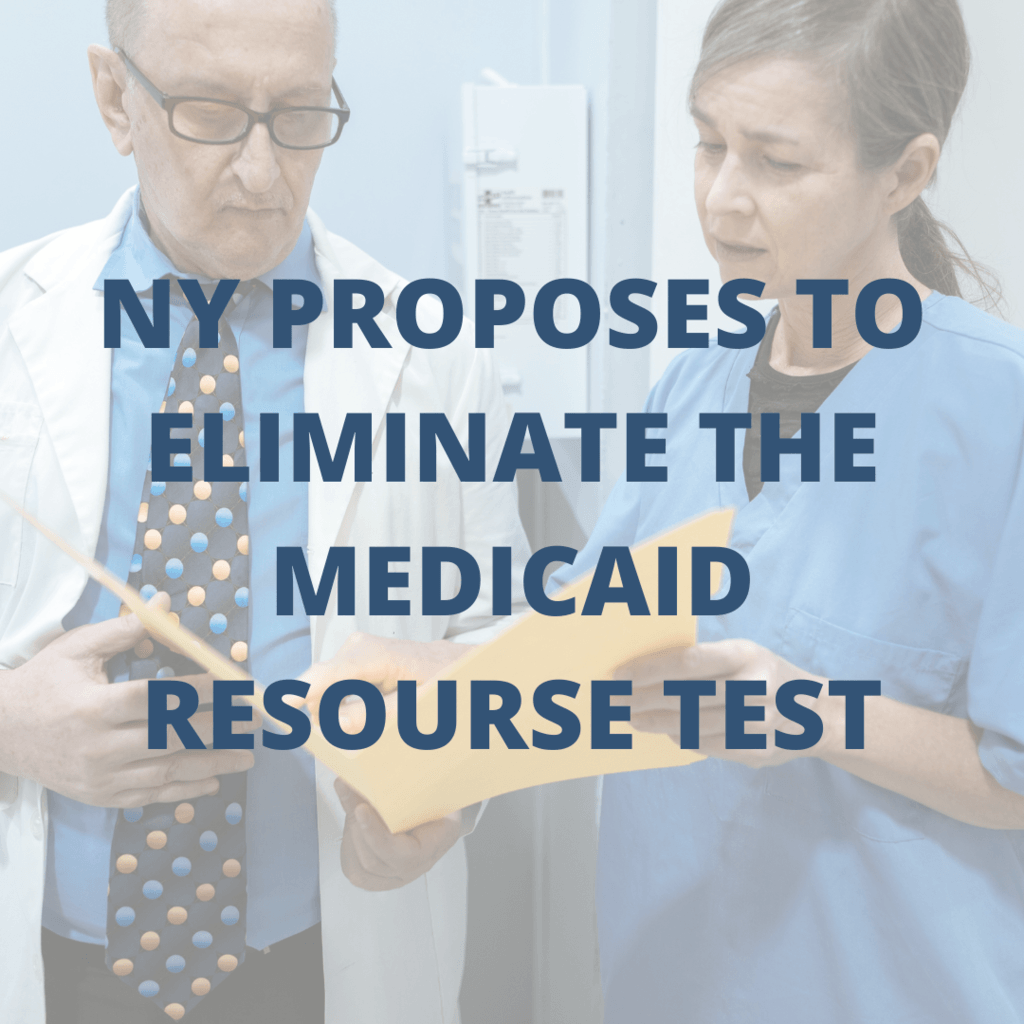
New York Proposes to Eliminate the Medicaid Resource Test in 2023
The proposed FY 2023 Executive Budget seeks to eliminate the resource test and raise the income cap for seniors and individuals with disabilities to 138% of the Federal Poverty Level in order to align with MAGI income. Should this portion of the budget pass, and at this point there’s no reason to believe that it won’t, a resident seeking institutional Medicaid coverage with resources in excess of the current $16,800 resource threshold will be eligible for benefits. But really, as there will no longer be a resource test at all, a resident seeking Institutional Medicaid coverage with assets valued at $168,000 will qualify as well as a resident with assets valued at $1,680,000, and so on and so forth. From indigent New Yorkers, all the way up to and including New York’s ultra-high-net-worth individuals, everyone would qualify for benefits on the basis of resources. But while New York State has the authority to eliminate the resource test, the 60 month look back and transfer of assets penalty can only be eliminated by the federal government. So, as things stand right now, a resident applying for Medicaid benefits will still have to produce 5 years of financials and will still be penalized (i.e. determined to be ineligible for benefits) for any uncompensated transfers within the look back period.
How can New York State afford this? The State, based upon its “data”, believes that elimination of the resource level will only result in a 10.3% increase in enrollment in 2023. However, many of us who have been following the development of this portion of the budget, expect New York to escalate estate recovery efforts. After all, if a Medicaid recipient expires with $168,000 in assets that pass through probate, the recipient’s estate will get hit with a priority claim from the Medicaid Program. So it’s believed that the sustainability of this provision is predicated on New York recovering its reimbursement dollars on the back end, via estate recovery.
How will this effect skilled nursing facilities (“SNFs)? We can only assume that SNFs will have less private pay residents on the census. While as of right now it would seem that Medicaid Promissory Notes remain a viable option for residents who have not completed their asset protection planning prior to the 5 year look back thereby resulting in some private payment to SNFs, there is a high probability that many residents with assets less than $75K will simply “take their chances” or perhaps spend down their assets on luxury items that can then be gifted to family and friends rather than pass through probate and be lost to the Medicaid Program. It is also likely that NAMI collection will remain the bane of SNFs, although with a potential upside. Under the current regulations, it is common knowledge that NAMI not collected is NAMI lost, as NAMI is comprised of income that pursuant to New York State Law is exempt from garnishment by ordinary creditors. However, upon the implementation of the proposed changes, the resident with an outstanding NAMI balance that continues to grow could very well have $50K or more in their bank accounts that is subject to judgment enforcement.
In any event, we may see some very interesting developments in this industry in the months and years to come. As always, please feel free to reach out to Cona Elder Law with any thoughts and/or concerns regarding the proposed legislation. We will continue to provide updates to our clients and colleagues as things progress.
About the Author Cona Elder Law
Related Posts
Charging Forward: Implementing New Regulations on Credit Card Payment For Medical Services
Resident Voting Rights: Is Your Facility Meeting Its Obligations?
Implementing Regulations Stymie Medicaid Access and Reimbursement for Undocumented Residents Over Age 65
The Aging Prison Population: A Nursing Home Dilemma
Medical Aid in Dying Act Gains Momentum But Legislature Fails to Act
In High Demand: The Implications of Recreational Marijuana & CBD Use in New York Skilled Nursing Facilities

